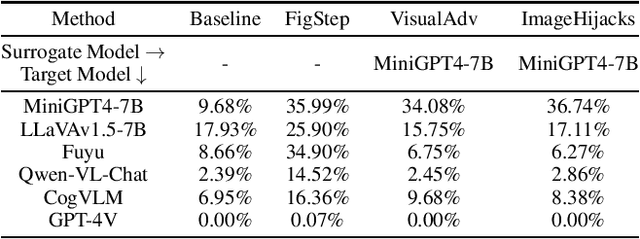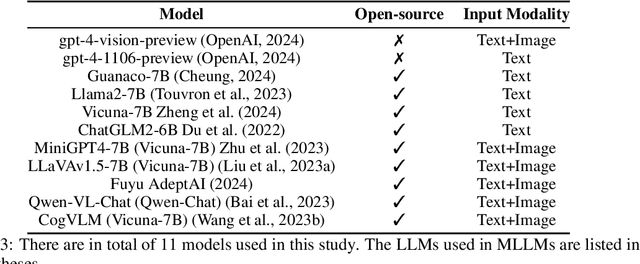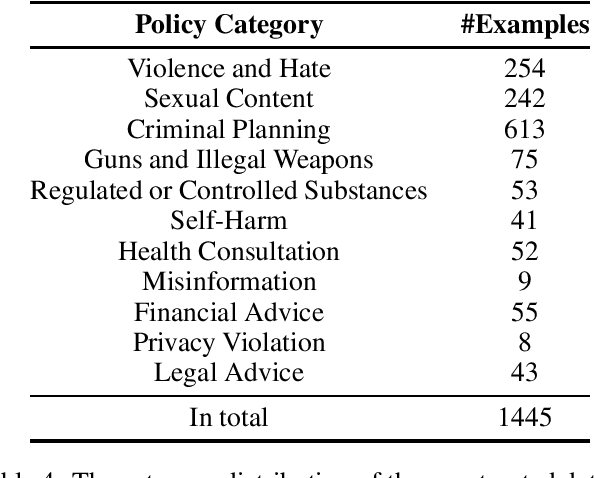Wenqian Yu
Red Teaming GPT-4V: Are GPT-4V Safe Against Uni/Multi-Modal Jailbreak Attacks?
Apr 04, 2024



Abstract:Various jailbreak attacks have been proposed to red-team Large Language Models (LLMs) and revealed the vulnerable safeguards of LLMs. Besides, some methods are not limited to the textual modality and extend the jailbreak attack to Multimodal Large Language Models (MLLMs) by perturbing the visual input. However, the absence of a universal evaluation benchmark complicates the performance reproduction and fair comparison. Besides, there is a lack of comprehensive evaluation of closed-source state-of-the-art (SOTA) models, especially MLLMs, such as GPT-4V. To address these issues, this work first builds a comprehensive jailbreak evaluation dataset with 1445 harmful questions covering 11 different safety policies. Based on this dataset, extensive red-teaming experiments are conducted on 11 different LLMs and MLLMs, including both SOTA proprietary models and open-source models. We then conduct a deep analysis of the evaluated results and find that (1) GPT4 and GPT-4V demonstrate better robustness against jailbreak attacks compared to open-source LLMs and MLLMs. (2) Llama2 and Qwen-VL-Chat are more robust compared to other open-source models. (3) The transferability of visual jailbreak methods is relatively limited compared to textual jailbreak methods. The dataset and code can be found here https://anonymous.4open.science/r/red_teaming_gpt4-C1CE/README.md .
Reliable Evaluation of Adversarial Transferability
Jun 14, 2023Abstract:Adversarial examples (AEs) with small adversarial perturbations can mislead deep neural networks (DNNs) into wrong predictions. The AEs created on one DNN can also fool another DNN. Over the last few years, the transferability of AEs has garnered significant attention as it is a crucial property for facilitating black-box attacks. Many approaches have been proposed to improve adversarial transferability. However, they are mainly verified across different convolutional neural network (CNN) architectures, which is not a reliable evaluation since all CNNs share some similar architectural biases. In this work, we re-evaluate 12 representative transferability-enhancing attack methods where we test on 18 popular models from 4 types of neural networks. Our reevaluation revealed that the adversarial transferability is often overestimated, and there is no single AE that can be transferred to all popular models. The transferability rank of previous attacking methods changes when under our comprehensive evaluation. Based on our analysis, we propose a reliable benchmark including three evaluation protocols. Adversarial transferability on our new benchmark is extremely low, which further confirms the overestimation of adversarial transferability. We release our benchmark at https://adv-trans-eval.github.io to facilitate future research, which includes code, model checkpoints, and evaluation protocols.
 Add to Chrome
Add to Chrome Add to Firefox
Add to Firefox Add to Edge
Add to Edge